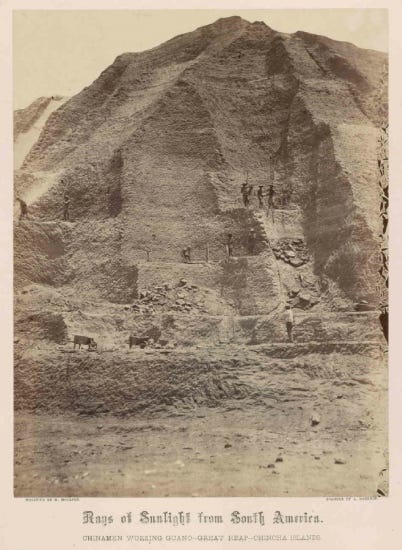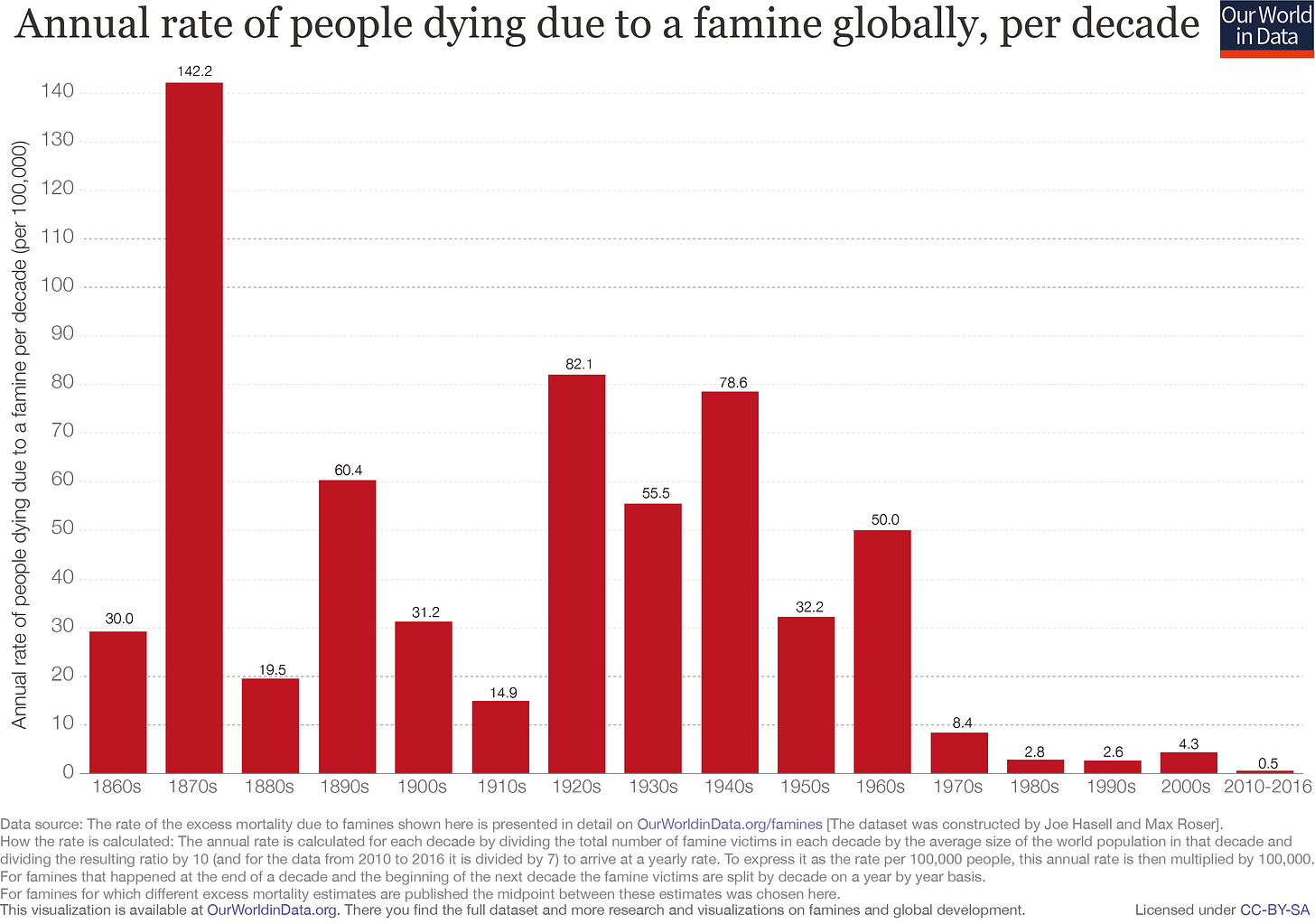If you dig a little, there is an interesting story behind everything.
When I was a kid, my father (an avid gardener) took my brother and me along on his frequent trips to the garden nursery. As you entered the nursery, you were greeted by fertilizer bags stacked by the hundreds. The heaps of bags posed a play place paradise to the two toddlers, and we spent hours racing and jumping on the stinky obstacle course. We loved it. Little did I know that inside of these smelly bags was one of the most important innovations in human history.
Guano!
During the 1800s, ships from all over the world set sail to the small Chincha Islands off the coast of Peru. Were they seeking riches of gold, diamonds or oil? No, their prize was more out of the ordinary - mountains of bird shit (aka guano).
The sea around these islands flourished with fish, attracting birds by their millions. And because rain was rare in this part of the world, the guano had accumulated over centuries into small mountains, hundreds of feet high.

But why the frenzy over bird droppings?
For centuries farmers had used manure as a means to boost crop yields. This is because manure is packed with goodies like phosphorous and potassium that help plants grow, but also nitrogen - and man, plants love nitrogen. Plants don’t create their own nitrogen, they get it from microorganisms in the soil that produce it at a snail’s pace. Additionally, the natural nitrogen supply in most soil is sparse, hence the need for farmers to boost it through manure.
This brings me back to the Chincha Islands off the coast of Peru. The mountains of guano had a remarkably high nitrogen content which is why it was so sought after. So intense was the guano race that the United States passed the 1856 Guano Islands Act that allowed all American citizens to claim islands that had seabird guano on them as US territory. The US claimed approximately 200 islands, and nine mid-Pacific atolls (tiny coral islands) still belong to America, including Midway, the scene of the infamous World War II battle.

The poor sea birds couldn’t keep up with the fertilizer frenzy, and by 1880, the world’s guano deposits were depleted. The fertilizer rush was diverted to the Atacama desert in South America in search of Chilean saltpetre, a mineral that by 1900 was used to produce two-thirds of the world’s fertilizer. Chilean saltpetre was equally valuable for making gunpowder, and with wars looming, demand for the scarce mineral soared. With supply dwindling, Sir William Crookes, the famous British chemist, predicted that the world would be starving by 1930 unless scientists discovered a way of making synthetic nitrogen fertilizer.
Similar to Covid-19, the fate of humanity was left to innovative scientists.
Haber-Bosch
At the time, Germany was importing more Chilean nitrate than any other nation to support its expanding population, and there were fears that they could be cut off from supply in the event of a major war. Although nitrogen constitutes approximately 78% of the air we breathe, its molecular structure in the atmosphere makes it inaccessible to plants. Against this backdrop, German scientists undertook the seemingly impossible task of converting the nitrogen available in the air into fertilizer. Author Matt Ridley describes the apparent complexity of the undertaking at the time as “as hard to solve as the alchemist’s dream of turning lead into gold”.
The watershed moment came in 1908 when Fritz Haber and Carl Bosch discovered a way to make ammonia using nitrogen and hydrogen, thus making it possible to create synthetic fertilizer. What became known as the “Haber-Bosch process” dramatically increased the quantity and the range of geographies where food could be grown. According to Bill Gates (a self-proclaimed fertilizer evangelist):
“Along with Norman Borlaug’s semi-dwarf wheat and new varieties of corn and rice, synthetic fertilizer was a key factor in the agricultural revolution that changed the world in the 1960s and 1970s. It’s been estimated that if we couldn’t make synthetic fertilizer, the world’s population would be 40 to 50 percent smaller than it is.”

Thanks to fertilizer (and other supporting innovations), we’ve been able to feed the exploding global population. Today, synthetic nitrogen fertilizer supports almost half of the world’s population, and famine has largely been consigned to the history books.
The climate change problem
Like all good things, synthetic fertilizer has a few downsides. Its impact on climate change is one of them. Synthetic fertilizer is made from ammonia, which is made using a process that requires a lot of heat, which produces greenhouse gases. Another problem is that when nitrogen fertilizer is applied to soil, plants absorb only half of the nitrogen. The nitrogen that doesn’t get absorbed gets released into the air, forming nitrous oxide, a greenhouse gas 265 times more potent than carbon dioxide. But luckily, scientists are coming to the rescue again and are hard at work trying to figure out a solution to this unfortunate anc complicated side effect.
Fertilizer has some problems, but it’s responsible for feeding billions of people, and without it, billions of people would have died prematurely, or never have been born at all. As you enjoy a wonderful meal this weekend, consider raising your glass in gratitude to the marvel that is, fertilizer.
Sources:
How Innovation Works: And Why It Flourishes in Freedom (Matt Ridley)
How to Avoid a Climate Disaster: The Solutions We Have and the Breakthroughs We Need (Bill Gates)
National Museum of American History: The Smithsonian and the 19th century guano trade: This poop is crap
If you enjoyed today’s edition, please give the like bottom below a click.
👇👇👇









This was fascinating. I had never really considered any of this before. I mean, I knew bird/bat guano was a thing... but I had no idea the lengths to which people went to get it, or how dire a situation the world was in before artificial fertilizer was discovered. I kind of always assumed that it was for cost reasons more than availability. So thanks for writing this up. I hope people don't give you too much shit for it! 🤣